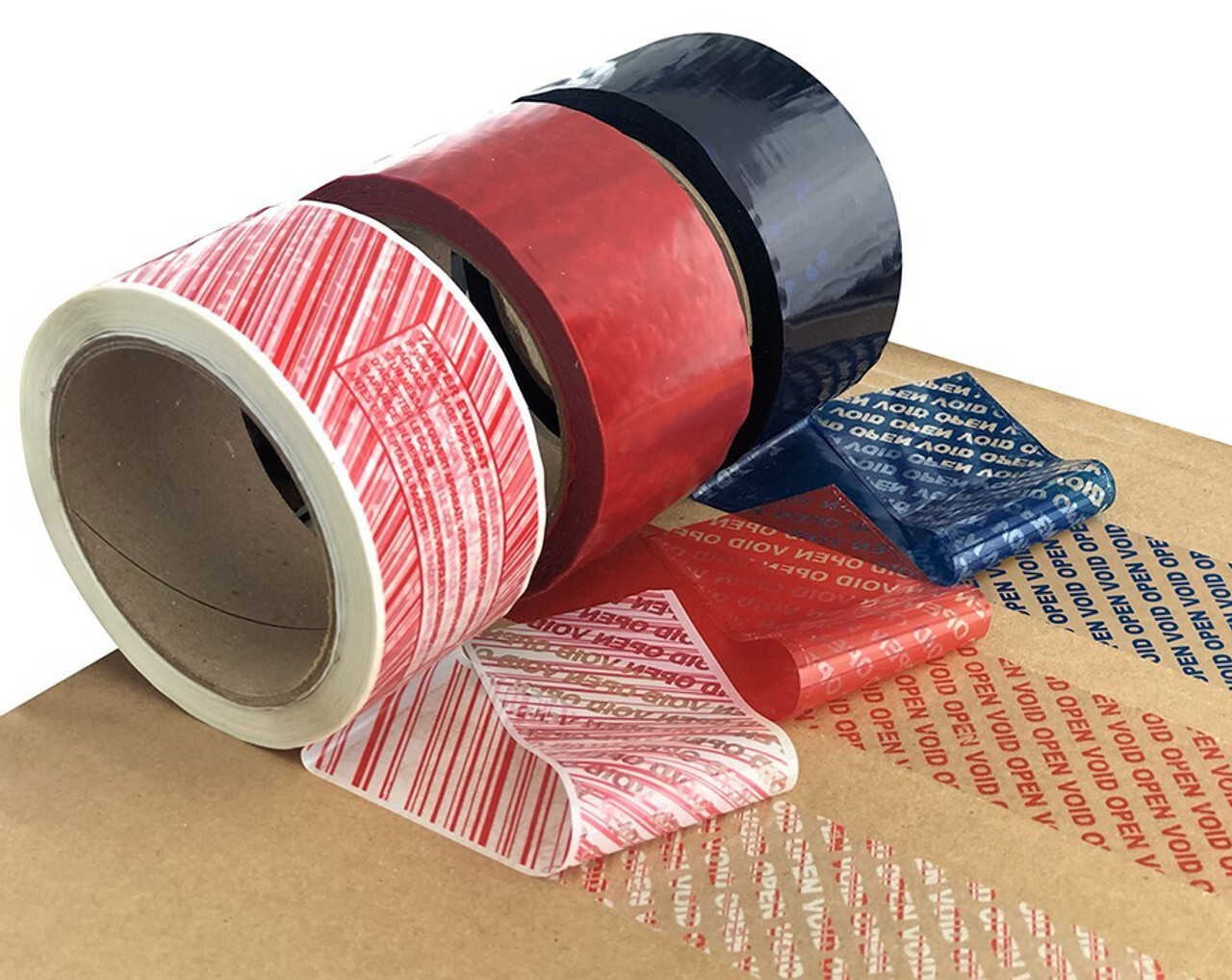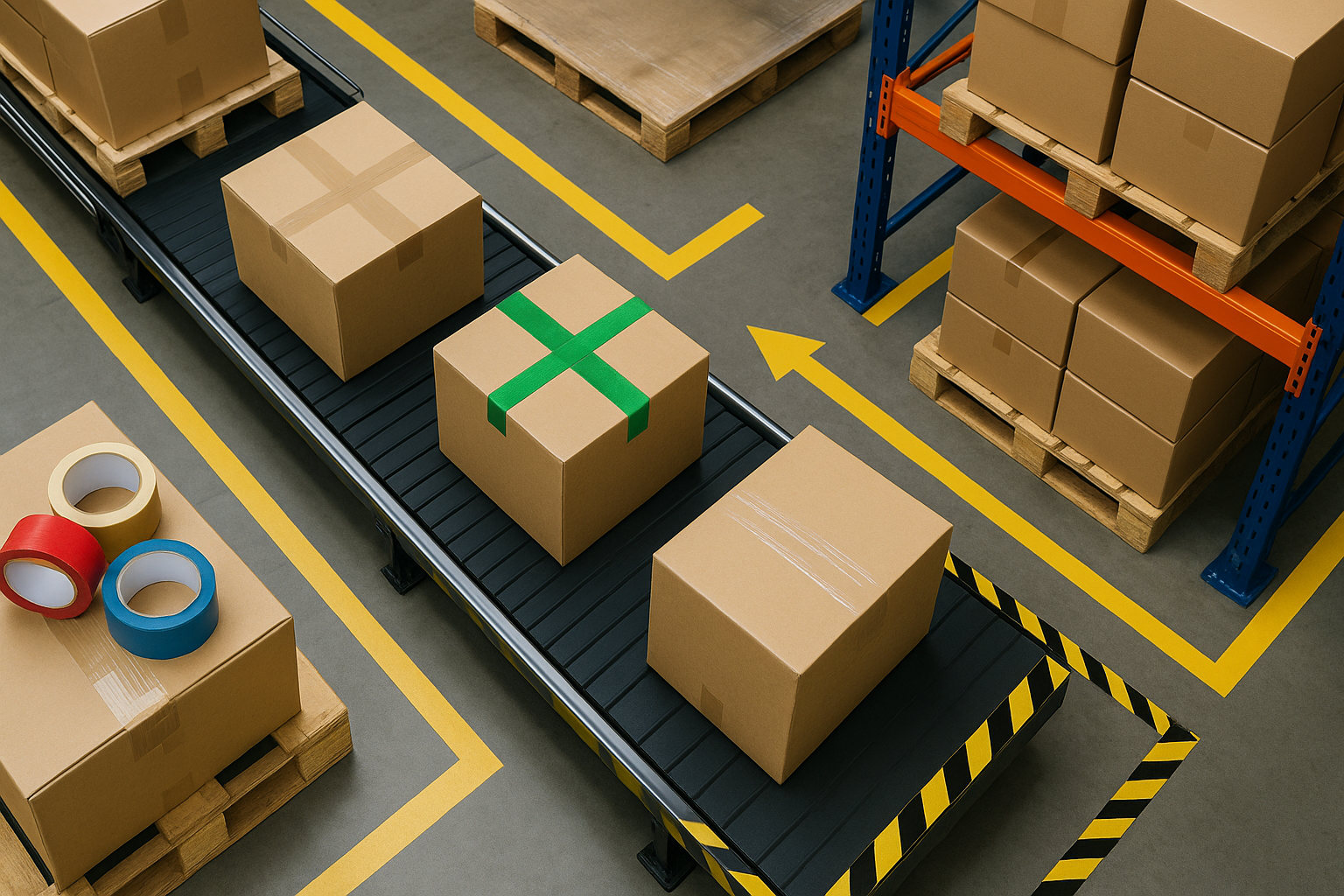How to Choose the Best Tape for Warehousing and Shipping
Packing this here, move that there. It's a never-ending cycle in the warehousing and shipping world. But, come to think of it, which tape is ideal for such an ecosystem?
Well, at the very least, it has to be reliable. With heavy loads, varying surfaces, and unpredictable environmental conditions, a lot could go wrong with subpar tape.
With that said, different warehouse use cases require different Tape Jungle custom tapes. Avert a potential mess by exploring our exclusive guide on choosing the right tape for warehousing and shipping.
Key Factors To Consider When Choosing Tape
Not every tape is built for the hectic, fast-moving environment of the warehousing world. Here are a few things to inform your decision:
- Adhesion strength: The weight and type of package you're sealing should dictate the strength of the tape you choose. For lighter packages, a standard packing tape would do just fine. For heavier packages or items with irregular surfaces, however, you'll need a tape with a firmer, more robust hold.
- Surface compatibility: Some tapes stick to various surfaces superbly well; others, not so much. Cardboard, plastic, and metal are the three most popular packaging surfaces in shipping. For each surface, be sure to select a tape that sticks without needing adjustment or compromise.
- Temperature resistance: This factor is particularly crucial when shipping products through extremely hot conditions or storing them in invariably cold storage. The best tape is highly resistant to both extremes.
- Durability: A tape used in warehousing and shipping shouldn't break under the slightest hint of stress. If it can't hold well under abrasion, moisture, or rough handling, then it's probably not worth considering.
- Application ease: Some operations rely on automated systems for tape application, while others use manual methods. Choose a tape that best fits your application method.
- Cost considerations: Budget should always be top-of-mind for shippers-especially when purchasing tape in bulk-but never at the expense of quality. The multipurpose tapes at Tape Jangle can help attain this delicate balance.
Types of Tape Commonly Used in Warehousing and Shipping
No two tapes are the same, and as you're about to find out, even the least-known tapes have a role in warehousing.
- Packing tape: The most common adhesive in warehousing and shipping is, you guessed right, the packing tape. Generic name aside, this tape is incredibly versatile and cost-effective for light to medium-weight items.
- Gummed paper tape: Tape Jungle's gummed paper tape is tamper-evident and eco-friendly while still providing strong adhesion to corrugated boxes.
- PVC tape: You won't find a more durable and moisture-resistant tape. As such, it's ideal for heavy-duty applications.
- Filament tape: This tape is reinforced with fiberglass for extra strength, perfect for when rough handling is inevitable.
- Double-sided tape: If you often secure pallets or bundle items, double-sided tape is a no-brainer. It provides excellent adhesion on both sides.
- Customer branded packing tape: Who said you can't seal packages and still make your brand visible? A printed custom packing tape gives you the best of both worlds.
- Safety tape: Used for marking hazardous areas or indicating safety concerns, a rather popular use-case.
- Social distancing tape: Ideal for people in high-traffic areas where natural crowd control just isn't possible.
- Anti-slip tape: Provides extra grip to prevent slipping on floors or pallets.
- Reflective tape: Low-light areas could leverage this tape's inherent bright and vivid colors for increased visibility.
Specific Applications and the Best Tape Types
The word "best" may be objective in most other spaces, but certainly not in the unique packing world of warehousing. Different applications ultimately call for different tapes.
Sealing Boxes
Standard, everyday sealing requires something, well, standard. However, for heavy-duty applications, swap the standard packing tape for reinforced options like PVC or filament tape. The added security they bring is second to none.
Securing Heavy Shipments
No one wants to spend the whole day packing and securing shipments of mammoth weight. It's an absolutely tedious process, but it can get worse with the wrong tape. Tape Jungle's filament or PVC is best for this nuanced application. The filament strapping tape, for instance, has a textile strength of up to 148.5 pounds, with thousands of filaments woven into the adhesive backing. That means it won't stretch or snap, no matter what.
Cold Storage Needs
For this application, choose a tape whose adhesive won't peel or weaken in low temperatures. PVC tape fits that description to a T.
Long-Distance Shipping
Long-distance shipments require tapes that can withstand rough handling and varying climates over 250 miles or more. PVC tape and filament tape are both excellent choices for ensuring a secure, unbreakable seal over such great distances.
Fragile and Valuable Goods
Obviously, the chances of a fragile product breaking during transit are much higher than when kept in a warehouse. So don't go in with packing tape alone; pair it up with protecting wrapping instead. The wrapping will provide an additional cushion around the goods so they don't break or crack easily. At the same time, the tape will make the actual package secure.
Pallet Stabilization
Even the most well-arranged pallets can shift, move, or even fall during transit. All it takes is a swerve, a sudden stop, or an abrupt change in direction. The combination of strapping and double-sided tape can perfectly secure pallets no matter the distance in question.

Tips for Effective Tape Application
Tape application is more art than science, which means you can become really good at it with a few good tips and prior planning.
- Surface preparation: Before applying tape, make sure the surface you're working on is clean and devoid of moisture. Dirt, grease, and moisture are notorious for weakening adhesion and undoing a flawless-looking tape job.
- Proper tension: It's fine to stretch the tape, but too much of it can weaken adhesion. For the best bond, apply even tension across the target surface.
- Manual vs. machine application: When applying tape manually, you might want to use a tape dispenser or roller for optimal adhesion. For machine tape application, follow the manufacturer's guidelines to the letter. Especially look out for the recommended speed and angle, as one wrong move could greatly compromise adhesive performance.
- Layering techniques: Double-taping works brilliantly when you need to bundle multiple items together or secure delicate or irregularly shaped items. Further reinforcing the edges provides an extra layer of security that's hard to achieve with just a single layer of tape.
- Inspection and quality control: Constantly check your seals to ensure they're holding as intended. Only through frequent inspections can you discover poorly sealed packages or the wrong choice of packing tape.
Cost-Saving Strategies Without Sacrificing Quality
The best packing tapes come at a price. In your quest to seek a more cost-effective tape solution, you might be tempted to compromise on quality. Don't. Instead, consider these money-saving strategies:
- Bulk purchasing: Order tapes in bulk to lower per-unit costs. At Tape Jungle, you can get carton sealing tape at a wholesale price, as opposed to buying individual rolls at a costlier price.
- Multipurpose tapes: One versatile tape for various different tasks? That's a genius cost-cutting move. Tape Jungle's filament tape, for instance, performs impeccably well across on-site packing, bundling, carton sealing, and reinforcement.
- Minimizing waste: The faster your tapes deteriorate, the sooner you'll have to buy replacement rolls and the more money you'll spend. Storing your tape in a cool, dry compartment helps to retain its adhesive quality and prevent premature aging or degradation.
- Custom tape with branding: Instead of buying one custom tape for packing and another for labeling, why not get one for both purposes? Custom-printed tape alleviates the need for separate brand-related labeling, saving you precious dollars in the process.
Common Mistakes To Avoid When Selecting Tape
If there's something that can ruin an otherwise promising packing operation in warehousing and shipping, it's selecting the wrong tape.
Here are the common mistakes we see:
- Using incompatible types: Not considering material or environmental factors will have you fixing adhesive issues and buying new rolls more times than you'd like.
- Ignoring tape thickness: The thinner the tape, the more likely it is to tear during transit. Factory-grade packing PVC tape from Tape Jungle comes in a thickness of 2.2 mil, enough to hold up through the most testing transit conditions.
- Overlooking environmental impact: Sustainability is a big deal these days. Opting for plastic-based tape without considering eco-friendly alternatives can hurt your sustainability goals and potentially invite scrutiny from relevant authorities.
- Underestimating load requirements: Choosing lightweight tape for heavy items is a cardinal sin. Consider the weight and durability requirements of your shipments, then choose a fitting tape. Not the other way around.
Innovative Tape Solutions for Modern Warehousing
We're in an era where sustainability and safety are quickly becoming non-negotiables. In light of this new reality, several new tape solutions are gaining momentum and will soon become go-tos for warehousing.
- Biodegradable and recyclable tapes: Shippers who want to leave a near-zero impact on the environment are increasingly navigating towards eco-friendly tapes, such as water-activated paper packing tape.
- High-visibility tapes: These are innately color-coded during production for quick, at-a-glance identification and safety.
- Tamper-evident tapes: With cases of opening and theft of in-transit goods firmly on the rise, these tapes provide the perfect trail of evidence.
- Pre-printed warning tapes: Additional labeling is fading into the background these days, thanks to this brand of packing tape.
Final Take
The equation for choosing tape for warehousing and shipping is simple: Little to no prior consideration equals the wrong pick. Carefully evaluate your needs based on load, environment, and handling before making a decision. Your budget, customer satisfaction, and bottom line depend on it.
At Tape Jungle, we stock a wide range of high-quality shipping tapes in as many colors and thickness specifications as you'd want. Get in touch today.


 Default Currency
Default Currency
